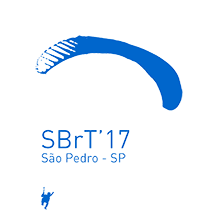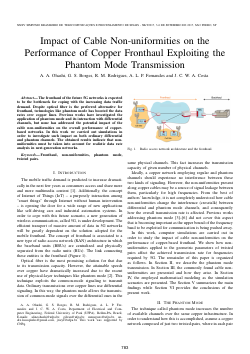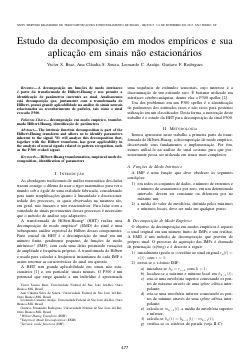
XXXV Simpósio Brasileiro de Telecomunicações e Processamento de Sinais

Estratégias Evolutivas para o Problema de Desconvolução Sı́smica
Monacér E. da Silva, Vinı́cius A. Oliveira, Kenji Nose-Filho, Levy Boccato, João M. T. Romano
DOI: 10.14209/sbrt.2017.105
Keywords: Seismic deconvolution Sparse deconvolution Evo- lutionary algorithms
Abstract
The problem of seismic deconvolution, based on the sparse hypothesis of the reflection profile, requires the optimiza- tion of a non-linear and multimodal function. In this work, we investigate the use of different evolutionary algorithms to perform the search of deconvolution filter parameters that minimize a normalized pseudo-Huber function, which have mechanisms to escape from optimal locations and explore more broadly the space of candidate solutions. The results obtained with the synthetic data show the performance progress of the deconvolution filters designed with these algorithms when compared to a stochastic gradient type method.Download

Melhorando a Identificação do Período Transiente em Simulações de Eventos Discretos
João P. J. V. da Silva, Renato M. de Moraes
DOI: 10.14209/sbrt.2017.109
Keywords: Discrete event simulation M/M/1 queue RWP warm-up period
Abstract
Establishing the warm-up period is a recurrent problem in discrete event simulation. The MSER-5 method for transient detection is consolidated and one of most cited work in the literature due to its simplicity and interesting results. This work suggests adaptations in the method to achieve better error rates and execution times. These suggestions are also applied to a variant of this method, the MSER-5Y, which is considered an advancement over the original method. The results of present work show that it is possible to achieve better results compared to MSER-5 and at least match MSER-5Y’s performance using far less execution times with minor adaptations.Download

Modem Acústico Usando Modulação Multiportadora via OFDM
Monira A. Gonçalves, Rafael V. Louredo, Michel P. Tcheou, Lisandro Lovisolo
DOI: 10.14209/sbrt.2017.111
Keywords: Modem Acústico OFDM Estimação de Canal
Abstract
Neste trabalho, apresenta-se um projeto de modem acústico que transmite dados utilizando modulação multiportadora através do ar livre. A escolha deste tipo de modulação em detrimento da modulação monoportadora se deve a necessidade de um uso mais eficiente da largura de banda limitada, e a minimização dos efeitos de multipercurso e desvanecimento seletivo em frequência, presentes em sistemas de comunicação sem fio. Foi desenvolvido um sistema capaz de transmitir dados sob a forma de ondas sonoras, utilizando recursos dos canais de saída e entrada de áudio para o estabelecimento da comunicação. O projeto emprega as modulações digitais BPSK e QPSK com um sistema OFDM de 40 subportadoras, detecção coerente e estimador de canalDownload

Impact of Cable Non-uniformities on the Performance of Copper Fronthaul Exploiting the Phantom Mode Transmission
A. A. Ohashi, G. S. Borges, R. M. Rodrigues, A. L. P. Fernandes, J. C. W. A. Costa
DOI: 10.14209/sbrt.2017.110
Keywords: Fronthaul non-uniformities phantom mode twisted pairs
Abstract
The fronthaul of the future 5G networks is expected to be the bottleneck for coping with the increasing data traffic demand. Despite optical fiber is the preferred alternative for fronthaul, technologies like phantom mode has boosted the data rates over copper lines. Previous works have investigated the application of phantom mode and its interaction with differential channels, but none has addressed the potential impact of the cable non-uniformities on the overall performance of copperbased networks. In this work we carried out simulations in order to investigate such impact on both ordinary differential and phantom channels. The obtained results indicate that nonuniformities must be taken into account for realistic data rate analysis in next-generation networks.Download

Classificação de Desvios Vocais baseadas em Características do Modelo Linear de Produção da Fala
Maria de F. K. B. Couras, Pablo H. U. de Pinho, Silvana L. do N. C. Costa, Suzete E. N. Correia
DOI: 10.14209/sbrt.2017.270
Keywords: Modelo Linear de Produção da Fala Desvios vocais Quantização Vetorial
Abstract
Neste trabalho, são empregadas técnicas de processamento digital de sinais, baseadas no modelo linear de produção da fala, para analisar a qualidade vocal. É avaliado o potencial discriminativo dos parâmetros obtidos da análise de predição linear (Linear Predictive Coding - LPC) - coeficientes LPC, coeficientes cepstrais e mel-cepstrais na classificação de desvios vocais (rugosidade, soprosidade e tensão). Com o auxílio da curva ROC (Receiver Operator Characteristic Curve), é realizada a classificação dos sinais, obtendo-se a melhor acurácia média de 86% na discriminação entre vozes tensas e soprosas, com os parâmetros mel-cepstrais, quantizados em 512 níveis.Download

Precision Evaluation of GPS based Autonomous Agricultural Vehicles using Computer Vision
R.C. Castro, M. M. da Silva, R. Y. Inamasu
DOI: 10.14209/sbrt.2017.112
Keywords: Computational vision Image processing RTK GPS Navigation Smart vehicles Precision agriculture
Abstract
Technological advances have been successfully achieved in precision agriculture using autonomous agricultural vehicles. Among these advances, the increase of efficiency and productivity in field operations can be highlighted. Several autonomous driving systems are implemented using the GPS RTK system, which allows operations to centrimetric accuracy. However, irregularities in ground conditions, tractor traction, wheel slip and operating speed may influence the performance of GPS based autonomous agricultural vehicles. In this way, the evaluation of the autonomous driving systems becomes essential to the achievement of high precision levels in field operations. This evaluation can be performed by measuring the displacements using locally installed sensors in the vehicle, such as: cameras, lasers, odometer, ultrasonic sensors, among others. Among the local sensing options, it is well-know that computer vision methods allow the location of any system in the space. Nevertheless, these methods demand the adjustments of their parameters to ensure high accuracy. In this way, the objective of this work is to evaluate the precision of an agricultural vehicle in an autonomous condition using computational vision methods and image processing techniques. Tracking localization by matching key points in digital images can be exploited in order to assess the location of the vehicle during its work in the field. The outcome of this proposal can be evaluated to infer conclusions about the accuracy of the autopilot system. The vehicle under study is a Massey Ferguson 7350 with the Auto-Guide 3000 autopilot system with GPS RTK correction signal. The computer vision system consists of two Canon Rebel T5 cameras with focal lens of 50 millimeters. The image processing was performed using a corners’ detector technique developed in a grid image in the field. The manuscript details the camera’s calibration and the vehicle’s localization procedures. The main conclusion of this work is that computer vision can be successfully exploited for aiding the autonomous driving of agricultural vehicles if devices, procedures and parameters are well selected.Download

Estudo da decomposição em modos empíricos e sua aplicação em sinais não estacionários
Victor S. Braz, Ana Claudia S. Souza, Leonardo C. Araújo, Gustavo F. Rodrigues
DOI: 10.14209/sbrt.2017.113
Keywords: decomposição em modo empírico transformada Hilbert-Huang identificação de parâmetros
Abstract
A decomposição em funções de modo intrínseco e parte da transformada de Hilbert-Huang e nos permite a identificação de parâmetros inerentes ao sinal. Analisaremos esta decomposição que, juntamente com a transformada de Hilbert, possui grande aplicabilidade na analise de sinais neurais relacionados ao reconhecimento de padrões, tais como o sinal evocado P300.Download

Increasing Isolated Word Recognition Performance by Training Models with Reverberant Audio
Fernanda de Souza Ferreira, Tiago Fernandes Tavares
DOI: 10.14209/sbrt.2017.114
Keywords: Isolated Word Recognition Reverberation MultiCondition Training
Abstract
Isolated Word Recognition (IWR) can be used in different applications, including home automation and car device control. These applications often take place in reverberant environments. Reverberation causes spectral distortion, harming IWR performance. We propose a multi-condition training method that uses both reverberant and non-reverberant audio to improve its generalization capabilities. Reverberant audio is obtained by applying digital sound effects to the training dataset. We used the proposed method to train an existing, baseline IWR system. Results show increased reverberation robustness in various conditions. Therefore, the proposed method poses an important contribution to voice control applications in reverberant environments.Download

A comparative analysis about similarity search strategies for digital forensics investigations
Vitor Hugo Galhardo Moia, Marco Aurelio A. Henriques
DOI: 10.14209/sbrt.2017.115
Keywords: Digital forensics Approximate matching similarity hash similarity search sdhash ssdeep
Abstract
Known File Filtering method separates relevant from non-relevant information in forensics investigations using white or black lists. Due to limitations on hash functions (inability to detect similar data), approximate matching tools have gained focus recently. However, comparing two sets of approximate matching digests using brute force can be too time-consuming. Strategies to efficiently perform lookups in digests databases have been proposed as a form of similarity search. In this paper, we compare some strategies based on ssdeep and sdhash tools concerning to precision, memory requirement, and lookup complexity. We show that none of these strategies address these requirements satisfactorily.Download

Análise do Efeito da Distância entre Nanopartículas de Ouro na Resposta de Sensores Plasmônicos
R. C. dos Santos, K. Q. da Costa, J. S. Costa, A. F. S. da Cruz
DOI: 10.14209/sbrt.2017.119
Keywords: SPR sensor Kretschmann Configuration Gold Nanoparticles Finite Elements Method Plasmonic
Abstract
This paper presents a numerical analysis of an array of gold nanoparticles in a Surface Plasmon Resonance sensor (SPR) in Kretschmann configuration. This is a study for a sensor response in function of the distance nanoparticles for two adjusts in its multilayer structure for the influence analysis in the sensibility, where we have checked the coupling effect between the nanoparticles and the relative difference with the analytical model. The numerical results have been obtained by the Finite element Method and they have been confirmed by analytical results.Download